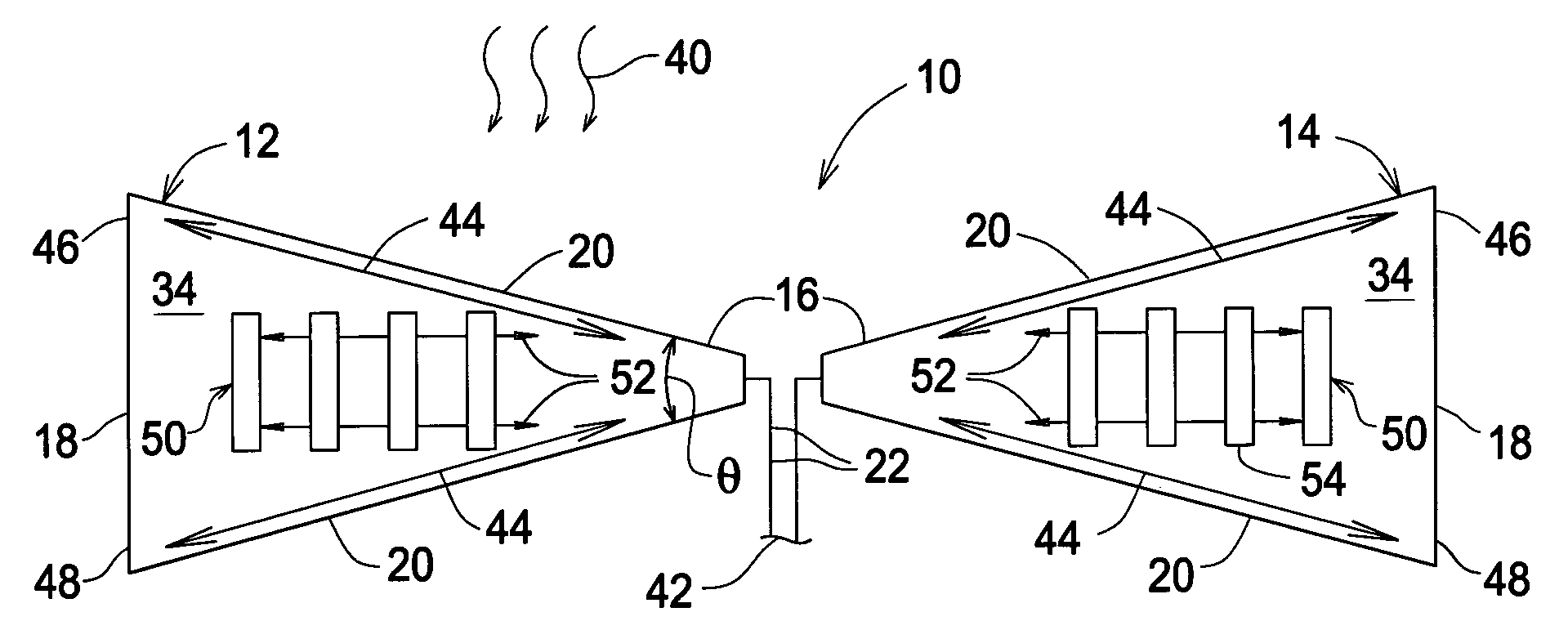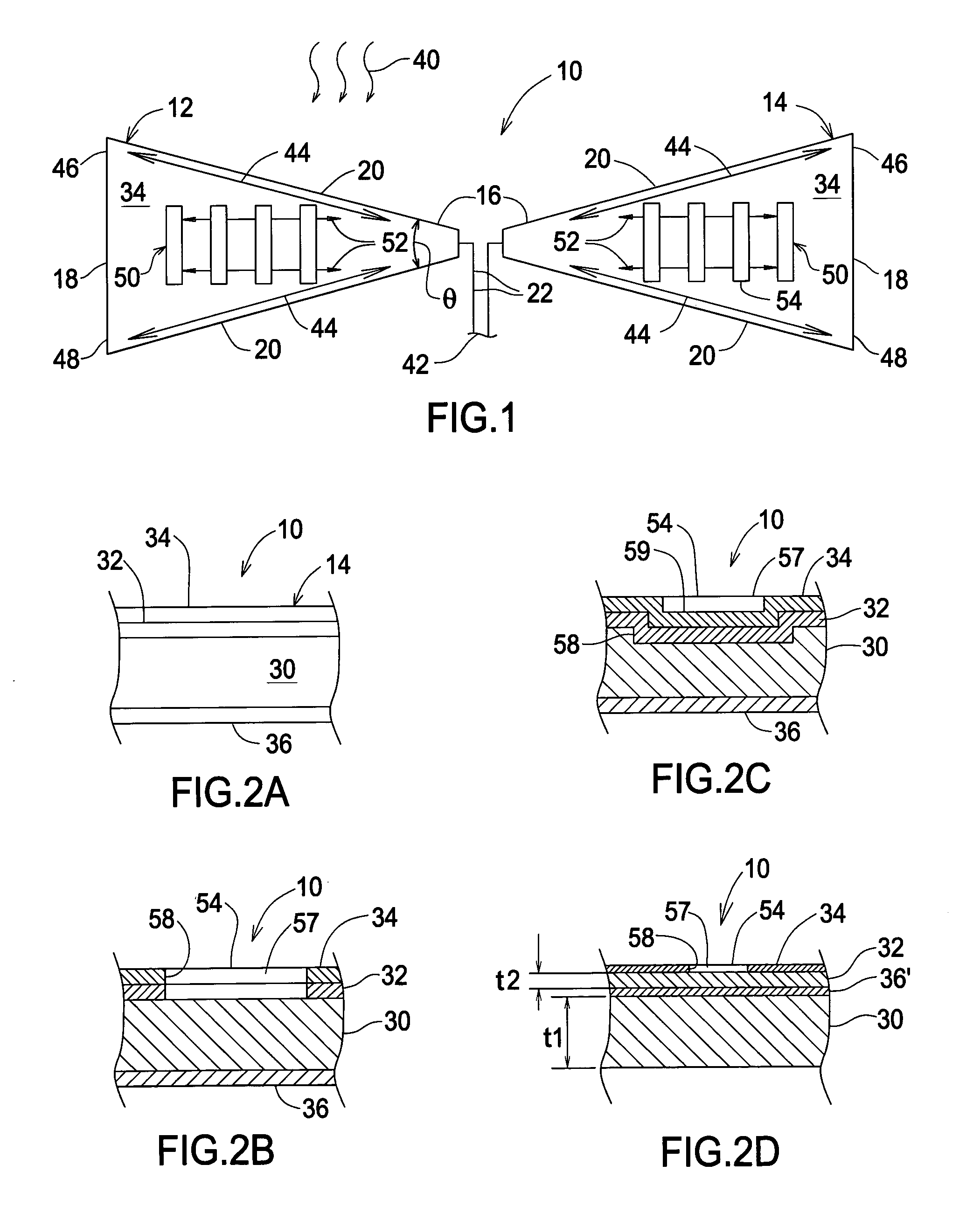Planar antenna with supplemental antenna current configuration arranged between dominant current paths
a technology of supplemental antenna current and dominant current path, applied in the direction of antenna feed intermediates, resonance antennas, radiating element structural forms, etc., can solve the problems of leaking energy into the substrate, and affecting the reception efficiency
- Summary
- Abstract
- Description
- Claims
- Application Information
AI Technical Summary
Benefits of technology
Problems solved by technology
Method used
Image
Examples
Embodiment Construction
[0033]Turning now to the figures, wherein like reference numbers are used to refer to like components, attention is immediately directed to FIG. 1 which illustrates one implementation of a planar antenna produced in accordance with the present invention and generally indicated by the reference numeral 10. It is noted that the various figures are not to scale for purposes of enhancing the reader's understanding. Moreover, descriptive terminology such as upper, lower, vertical and horizontal is in no way intended as limiting with respect to device orientation or operation as is used only for the purpose of providing a detailed understanding.
[0034]In the present example, planar antenna 10 includes a peripheral outline that is in the form of a bow-tie which is defined by an opposing pair of first and second bow arms 12 and 14, respectively. Each bow arm includes an innermost apex end 16 and an outermost edge 18. A pair of outwardly diverging edges 20 extend between apex end 16 and outer...
PUM
 Login to View More
Login to View More Abstract
Description
Claims
Application Information
 Login to View More
Login to View More - R&D
- Intellectual Property
- Life Sciences
- Materials
- Tech Scout
- Unparalleled Data Quality
- Higher Quality Content
- 60% Fewer Hallucinations
Browse by: Latest US Patents, China's latest patents, Technical Efficacy Thesaurus, Application Domain, Technology Topic, Popular Technical Reports.
© 2025 PatSnap. All rights reserved.Legal|Privacy policy|Modern Slavery Act Transparency Statement|Sitemap|About US| Contact US: help@patsnap.com



